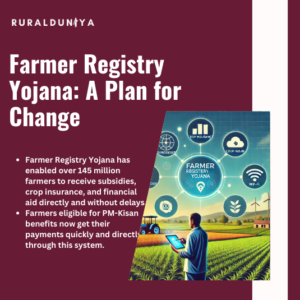Hey, do you have an idea about MGNREGA? It is one of the largest work guarantee programs in the world, launched in 2005 by the Ministry of Rural Development.
The Act provides a legal assurance of at least 100 days of paid work per year to adult individuals in rural households who request employment and are willing to perform labor that does not need specialized skills.
MGNREGA: Know Everything About Right to Work
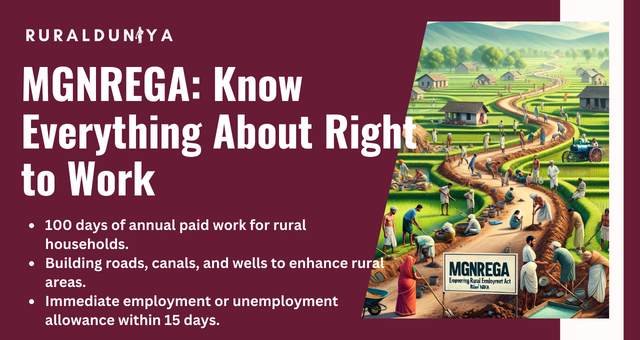
The Mahatma Gandhi National Rural Employment Guarantee Act (MGNREGA), previously referred to as the National Rural Employment Guarantee Act 2005 (NREGA), is an Indian legislation and social welfare initiative.
It aims to guarantee the “right to work” by providing employment opportunities in rural areas. The program ensures a minimum of 100 days of paid employment per year for rural households, provided that the adult members of the home willingly engage in unskilled physical labor.
The primary goals of it to improve livelihood security through the provision of employment opportunities and the creation of long-lasting infrastructure such as roads, canals, ponds, and wells.
Employment must be offered within a radius of 5 kilometers from the applicant’s place of residence, with the requirement of enforcing a minimum pay. If applicants do not receive work after 15 days of applying, they have the right to receive an unemployment payment.
This makes employment under it a legally guaranteed entitlement.
MGNREGA History
Over the course of 30 years starting from 1960, significant efforts were made to discover appropriate job programs in India’s extensive rural areas.
The government gained valuable insights from the events of these decades. In 1991, the government led by P.V Narashima Rao introduced a pilot program aimed at creating job opportunities in rural regions. The program had the following objectives:
- Creating employment opportunities for agricultural laborers during the period of low agricultural activity.
- Development of infrastructure
- Improvement of food security
The Employment Assurance Scheme was renamed as the Mahatma Gandhi National Rural Employment Guarantee Act (MGNREGA) after it was combined with the Food for Work Programme in the early 2000s.
Objectives of MGNREGA
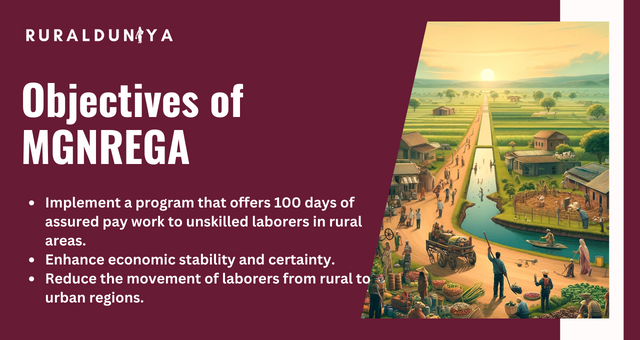
It aims to achieve the following objectives:
- Implement a program that offers 100 days of assured pay work to unskilled laborers in rural areas.
- Enhance economic stability and certainty.
- Reduce the movement of laborers from rural to urban regions.
Key Facts About MGNREGA
1. Rural households volunteering for unskilled work are eligible for 100 days of paid employment per year.
2. Employment will be offered within a 15-day period from the date of application.
3. Entitlement to unemployment benefits if job placement is not given within a 15-day period.
4. Compensation received within a 15-day period after the end of employment.
5. Gram Panchayats have the authority to carry out a range of allowable tasks.
6. It provides economic and social empowerment to women.
7. Prioritize the delivery of environmentally friendly and high-quality work.
8. Compulsory social audit guarantees responsibility and openness.
8. It tackles the vulnerability to climate change and promotes the conservation of natural resources.
9. The Gram Sabha and Gram Panchayat are responsible for approving and prioritizing activities under MGNREGA.
Role of MGNREGA in Rural Development
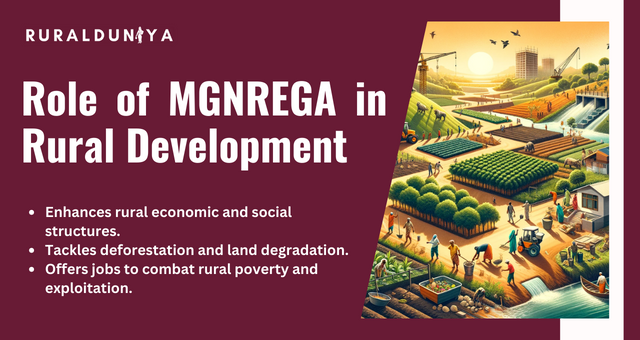
MGNREGA is a significant measure in achieving the right to employment. This law has facilitated the development of economic and social infrastructure in rural areas. As a result, individuals are experiencing consistent job prospects.
Additionally, it primarily addresses issues such as deforestation in arid forests and land degradation, which are contributing to the widespread spread of poverty. By effectively enforcing this legislation, the distribution of poverty can be altered through increased work opportunities.
It aims to provide work opportunities to prevent rural poverty and exploitation.
Role of Gram Sabha in MGNREGA
The Gram Sabha plays a significant role in the implementation of the Mahatma Gandhi National Rural Employment Guarantee Scheme. The specific responsibilities of the Gram Sabha are as follows:
- It prioritizes the works based on the potential of the local area.
- It oversees the execution of work within the Gram Panchayat.
- It serves as the main platform for social audits.
- It also functions as a platform for resolving any queries connected to MGNREGA work for all workers.
Role of Gram Panchayat in MGNREGA
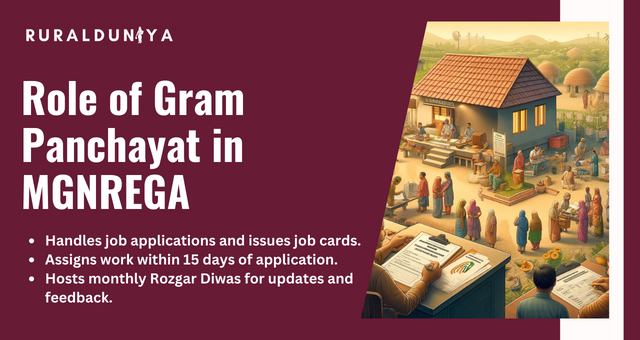
- The entity has the authority to accept job applications.
- Once the applications are received, it is tasked with verifying them.
- The Gram Panchayat registers all households.
- The Gram Panchayat issues MGNREGS job cards.
- It is responsible for assigning work within 15 days of application submission.
- An annual report is prepared that outlines the accomplishments of the scheme.
- Rozgar Diwas is held once a month in each ward.
MGNREGA Job Card
The MGNREGA Job Card is given to every adult member of a rural household who is willing to offer unskilled labor in order to earn a livelihood.
After obtaining an job card, individuals have the authority to present the card and request employment from the Government as part of the MGNREGA plan.
As of 2022-23, there are 154 million active workers enrolled in the MGNREGA program.
MGNREGA Budget
The central government has allocated Rs 86,000 crore for the employment guarantee scheme under the Mahatma Gandhi National Rural Employment Guarantee Act for the fiscal year 2025. This allocation matches the amount reported in the revised estimates for the current financial year.
According to the updated projections for 2023-24, the budget allocation for the main program is Rs 86,000 crore, which is significantly more than the initial estimate of Rs 60,000 crore for the current financial year.
Summarizing Insights

There is an urgent requirement for increased coordination across government ministries to facilitate the allocation and measurement of labor under MGNREGA.
State governments should give priority to the implementation of infrastructure projects in each hamlet, guaranteeing immediate employment opportunities for workers.
It is crucial to take the initiative to contact migrant workers who have returned and are in quarantine, as well as to give more authority to gram panchayats.
FAQs
What is the main aim of MGNREGA?
The primary goal of the it was to improve the economic stability of rural communities by offering a minimum of 100 days of guaranteed wage employment per year to every household.
Which state first introduced MGNREGA?
It was launched in 2006 in Uttar Pradesh.
What is the maximum number of days in MGNREGA?
The primary objective of it to ensure that each rural household receives a minimum of 100 days of assured wage employment throughout a single financial year.
Who is the father of NREGA?
The proposal was initially introduced in 1991 by the former Prime Minister P.V. Narasimha Rao.
What is the old name of MGNREGA?
In 2009, the National Rural Employment Guarantee Act 2005 was amended to modify the name of the Act from NREGA to MGNREGA.

Nishank is a social impact enthusiast with a solid foundation in public policy, micro-enterprise, and agribusiness. Growing up in a farmer’s family has given him a profound connection to rural communities, fueling his passion to empower people towards self-reliance. He completed his undergraduate studies at the Delhi University and earned a master’s degree in Rural Management from National Institute of Rural Development & Panchayati Raj in Hyderabad.

